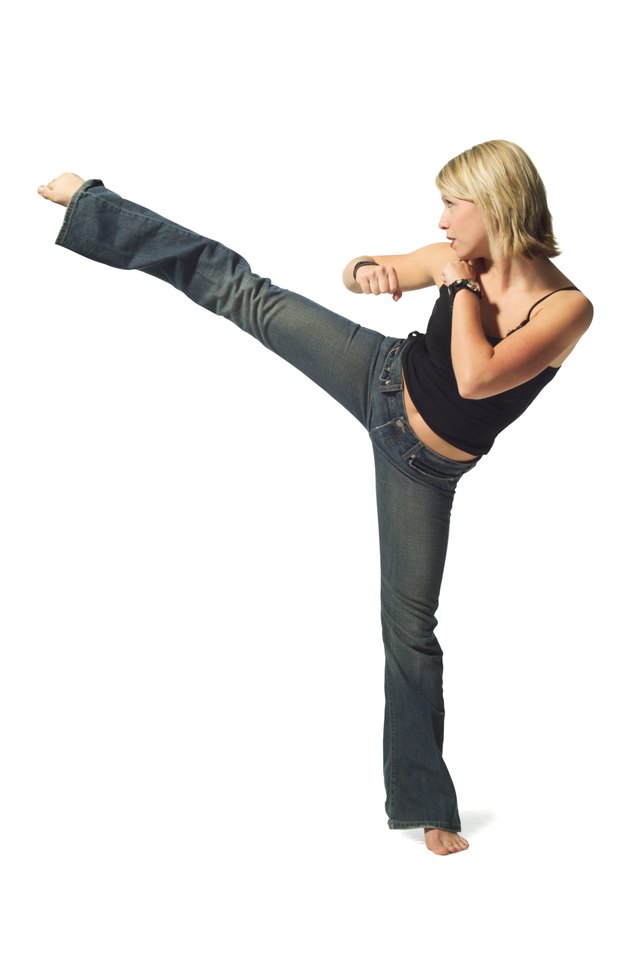How to Learn Kung Fu by Yourself

Training alone in any martial art, including kung fu, is a less effective practice than getting instruction in a live class taught by a qualified "sifu," or instructor. However, not everybody lives near a kung fu school, can afford kung fu lessons, and has a schedule that allows them to get to class regularly. If you don't, you can get started on your kung fu journey by practicing kung fu techniques alone at home. You'll never reach black belt skill without a teacher, but you can get your basics down while figuring out the logistics of attending a class.
Clear out a training area in your home, at least ten feet by ten feet. Hang a punching bag in one corner of the training space. If you don't have a ceiling where you can hang a bag, use a free-standing punching bag available at most sporting goods stores.
Find instruction. Three options for learning kung fu alone include user video sites like YouTube, books or magazines with photo instructions, and the home pages of kung fu schools. Many such schools now include short video lessons as a resource for students and promotional technique.
Choose a single technique to focus on. Some beginning kung fu techniques that lend themselves easily to self-teaching include basic punches, backfist strikes, hand swords, ball kicks (these refer to the ball of the foot), instep kick, rising knee, horse stance, fight stance and eight-point blocking form.
Study your single technique using the training resources you found. For best results, check with two different resources. This will give you different angles of instruction to help you better understand the basics.
Practice your technique for ten to twenty minutes, performing it both in the air and on your punching bag. During your practice, remember that kung fu is based on the natural movements of animals in the wild. Try to envision how different animals, for example a tiger and a snake, might do the technique differently. Work to imitate them.
Review your instructional materials and compare to what you've been doing. Make necessary corrections and practice for another ten minutes.
Repeat your practice sessions two to three times per week. On days you don't practice, read some of the classics on kung fu and combat, such as Sun Tzu, Bruce Lee, Tak Wah Eng, David Chow and Lam Sai Wing.
Warnings
Practicing martial arts without a skilled teacher may lead to injuries. Avoid advanced movements that require years of experience to perform skilfully.
References
- Dave Coffman; Martial Arts Historian; Hillsboro, Oregon
- "Gung Fu: The Natural Way"; Michael Schmitt; 1995
- "The Art of Expressing the Human Body"; Bruce Lee; 1998
Writer Bio
Jake Wayne has written professionally for more than 12 years, including assignments in business writing, national magazines and book-length projects. He has a psychology degree from the University of Oregon and black belts in three martial arts.
